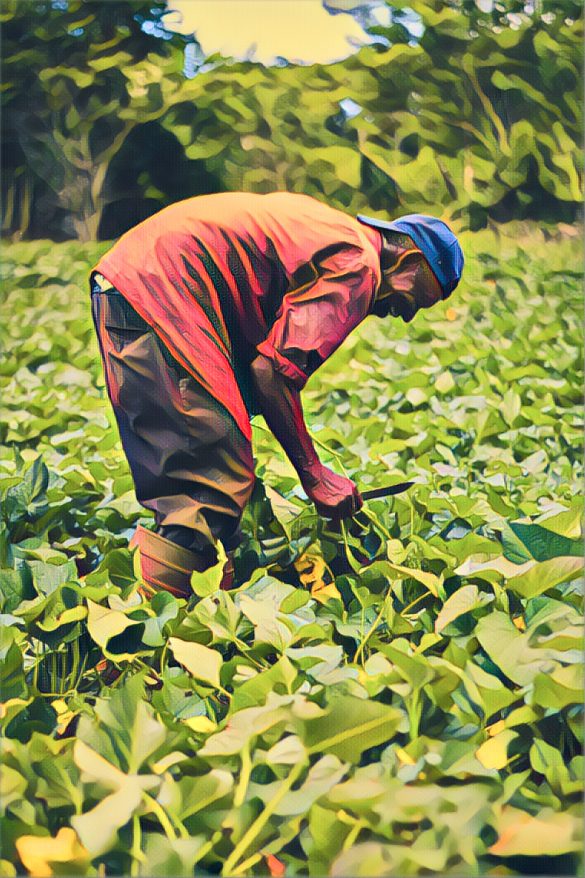Zimbabwe faces a severe water crisis as droughts have become more frequent and intense due to climate change. The country’s agriculture sector, which employs about 70% of the population and contributes 15% to the GDP, is particularly vulnerable to the impacts of water scarcity and variability. Farmers struggle to produce enough food for their families and the market while dealing with pests, diseases, soil degradation, and low prices.
To overcome these challenges, some farmers are adopting smart agriculture practices that use technology, innovation, and data to improve crop productivity, resilience, and profitability. Smart agriculture can help farmers optimize water, land, inputs, and labor use while reducing greenhouse gas emissions and enhancing environmental sustainability.
One example of smart agriculture is precision irrigation, which uses sensors, drones, and mobile phones to monitor soil moisture, crop growth, and weather conditions and deliver the right amount of water to each plant at the right time. This can save water, energy, and fertilizers while increasing yields and quality.
Another example is conservation agriculture, which involves minimum tillage, crop rotation, and mulching to improve soil health, water retention, and biodiversity. This can reduce erosion, runoff, and evaporation, enhancing soil fertility and organic matter.
A third example is climate-smart seed varieties, which are bred or genetically modified to withstand drought, heat, salinity, and pests. These seeds can help farmers cope with climate extremes and variability while boosting crop performance and nutrition.
The Zimbabwean government and its partners are supporting the adoption of smart agriculture through various initiatives, such as providing training, extension services, subsidies, loans, and insurance to farmers. They are also investing in research and development, infrastructure, and policy reforms to create an enabling environment for smart agriculture.
One of the partners is the Food and Agriculture Organization of the United Nations (FAO), which has implemented several smart agriculture projects in Zimbabwe since 2015. These projects aim to enhance the capacity of farmers, institutions, and stakeholders to adopt smart agriculture practices that suit their local contexts and needs.
According to FAO Representative in Zimbabwe Patrice Talla, smart agriculture can help Zimbabwe achieve food security, climate adaptation and mitigation, and sustainable development. “Smart agriculture is not a one-size-fits-all solution. It is a context-specific approach that requires participatory planning, implementation, and evaluation. It also requires collaboration among different actors from public, private, and civil society sectors. FAO is committed to supporting Zimbabwe in this endeavor,” he said.
Some farmers who benefited from FAO’s projects shared their experiences and testimonies. Tendai Moyo from Mashonaland Central Province said that precision irrigation has helped him increase his maize yield from 2 tonnes per hectare to 8 tonnes per hectare. He also said that he has diversified his crops to include vegetables, fruits, and herbs. “I can now feed my family well and sell the surplus to the market. I have also improved my income and living standards,” he said.
Another farmer, Grace Chikwava from Manicaland Province, said that conservation agriculture has helped her conserve water and soil on her farm. She also said she had reduced her labor costs by using less tillage. “I used to spend a lot of money hiring oxen or tractors to plow my land. Now, I only use a ripper or a jab planter to make holes for planting. This saves me time and money,” she said.
A third farmer, Tafadzwa Chikwira from Masvingo Province, said climate-smart seed varieties have helped him cope with droughts on his farm. He also said that he had increased his crop diversity by planting different types of cereals, legumes, and tubers. “I used to plant only maize on my farm. But maize is very sensitive to droughts. Now, I plant sorghum, millet, cowpeas, and sweet potatoes. These crops are more tolerant to dry conditions,” he said.
These farmers are among the thousands of Zimbabweans embracing smart agriculture to adapt to climate change and improve their livelihoods. They are also contributing to the country’s efforts to achieve the Sustainable Development Goals (SDGs), especially SDG 2 on ending hunger, SDG 6 on ensuring clean water and sanitation, SDG 13 on taking action on climate change, and SDG 15 on protecting life on land.
As Zimbabwe faces another dry season ahead, smart agriculture offers hope for its farmers and future.
Source: The Herald


